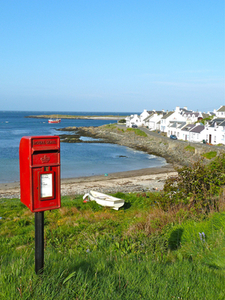Sunday, February 21. 2021
Please do not put IP addresses into DNS MX records
Trackbacks
Trackback specific URI for this entry
No Trackbacks
Comments
Display comments as
(Linear | Threaded)
Dear Hanno,
I like to comment on your posting with the following remarks:
1. [Some] mail servers do configure an IP address.
No, it is the DNS responsible person acting here erroneously.
2. Given (1.) this is only possible for IPv4 addresses since they obey the same syntax as domain names (dotted-decimal).
IPv6 addresses with colons have a different syntax.
3. To publish DNS records usually requires the parsing of the DATA section prior of populating the database for a DNS content server. It is an easy task for the SW to recognise and check IPv4 addresses prior of inserting (and of course to avoid them).
4. You should blame these SW; errors are human. SW should validate the input.
5. Setting up MX records needs to supply
a) the domain name
b) the weight
c) the responsible MX server (given by name)
d) the corresponding A/AAAA addresses.
6. Given a functioning MX server
a) reverse DNS entires (in-addr.arpa, ip6.arpa),
b) SPF records,
c) TLSA records,
d) and other domain verification materials
needs to be published.
Today in the current Internet, it is much more than just setting up a MX.
Regards.
--eh.
I like to comment on your posting with the following remarks:
1. [Some] mail servers do configure an IP address.
No, it is the DNS responsible person acting here erroneously.
2. Given (1.) this is only possible for IPv4 addresses since they obey the same syntax as domain names (dotted-decimal).
IPv6 addresses with colons have a different syntax.
3. To publish DNS records usually requires the parsing of the DATA section prior of populating the database for a DNS content server. It is an easy task for the SW to recognise and check IPv4 addresses prior of inserting (and of course to avoid them).
4. You should blame these SW; errors are human. SW should validate the input.
5. Setting up MX records needs to supply
a) the domain name
b) the weight
c) the responsible MX server (given by name)
d) the corresponding A/AAAA addresses.
6. Given a functioning MX server
a) reverse DNS entires (in-addr.arpa, ip6.arpa),
b) SPF records,
c) TLSA records,
d) and other domain verification materials
needs to be published.
Today in the current Internet, it is much more than just setting up a MX.
Regards.
--eh.
The MX record's name also serve as the key in the SSL certificate when using DKIM DMARC. So, if you use an IP address here, there's no way you'll be able to set up DKIM/DMARC.
This has nothing to do with DKIM/DMARC. Maybe you're referring to mta-sts where the mx actually needs to have a valid certificate for that hostname.
 I want to highlight a common misconfiguration in the DNS records for e-mail servers.
I want to highlight a common misconfiguration in the DNS records for e-mail servers.